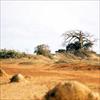
Djibouti
Djibouti women and children in the spotlight
DJIBOUTI: Efforts to contain soaring food prices and drought
DJIBOUTI: Rains boost pastoral lands but rising food costs threaten food security for many
DJIBOUTI: Clean water for 25,000 people
National name: Jumhouriyya Djibouti
Geography
Capital : Djibouti
Major Towns: Tadjoura, Obock, Khor Angar, Yoboki
Location (geographical coordinates/latitude and longitude): 11°36'N, 43°10'E
Time Zone: EAT (UTC+3)
Size (Land and Sea) 23,000 sq km
Borders with Eritrea 109 km, Ethiopia 349 km, Somalia 58 km
Elevation extremes: Lowest point: Lac Assal -155 m; highest point: Moussa Ali 2,028 m
Politics
Head of State: President: Ismail Omar Guelleh (1999), Prime Minister: Dileita Mohamed Dileita (2001)
Form of Government: Parliamentary democracy
Independancy (from France): June 27, 1977
Currency: Franc (DJF)
Industry
Main industries: Construction, agricultural processing, salt
Natural resources: geothermal areas, gold, clay, granite, limestone, marble, salt, diatomite, gypsum, pumice, petroleum
Agriculture: fruits, vegetables; goats, sheep, camels, animal hides
Population and People
Population: 496,374 (July 2007 est.)
Population density per sq mi: 58
Growth rate: 2.0%
Birth rate: 39.07 births/1,000 population (2007 est.)
Total fertility rate: 5.23 children born/woman (2007 est.)
Infant mortality rate: 100.8/1000
Religion: Muslim 94%, Christian 6%
Languages: French (official), Arabic (official), Somali, Afar
Ethnic groups / Tribes: Somali 60%, Afar 35%, other 5% (includes French, Arab, Ethiopian, and Italian)
Average age: 0-14 years: 43.4% (male 107,957/female 107,233); 15-64 years: 53.2% (male 137,111/female 126,952); 65 years and over: 3.4% (male 8,626/female 8,495) (2007 est.)
Life expectancy: 43.3
Literacy (definition: age 15 and over can read and write): Total population: 67.9%; male: 78%; female: 58.4% (2003 est.)
- Bordering the Gulf of Aden and the Red Sea
- Djibouti lies within a geological feature known as the Afar Triangle, one of the hottest and most desolate places on Earth
- Hot, dry desert
- Mountains in the center of the country
- Status as a free trade zone in northeast Africa
- Two-thirds of the inhabitants live in the capital city, the remainder being mostly nomadic herders
- Djibouti provides services as both a transit port for the region and an international transshipment and refueling center
- Has historically been part of several states
- Two main ethnic groups: the Afar and the Somalis
- Originally inhabited by nomadic tribes
- Djibouti (capital), 19th-century city with a distinctly Arabic feel
- Lively Central Market
- Tropical Aquarium with underwater exhibits from the Red Sea
- Gulf of Tadjoura: many species of fish and coral and is ideal for diving, snorkelling and underwater photography
- Coral reefs in the Red Sea
- Lake Abbé with a gathering place for flamingos and pelicans and the location of strange natural steaming chimneys
- Dormant volcanoes and lava fields
-
Lake Assal: one of the lowest surface areas anywhere on the planet (150m/570 ft below sea level)
 Text Area - Djibouti
Text Area - Djibouti Content List - Djibouti News
Content List - Djibouti News



 Map - Djibouti Map
Map - Djibouti Map